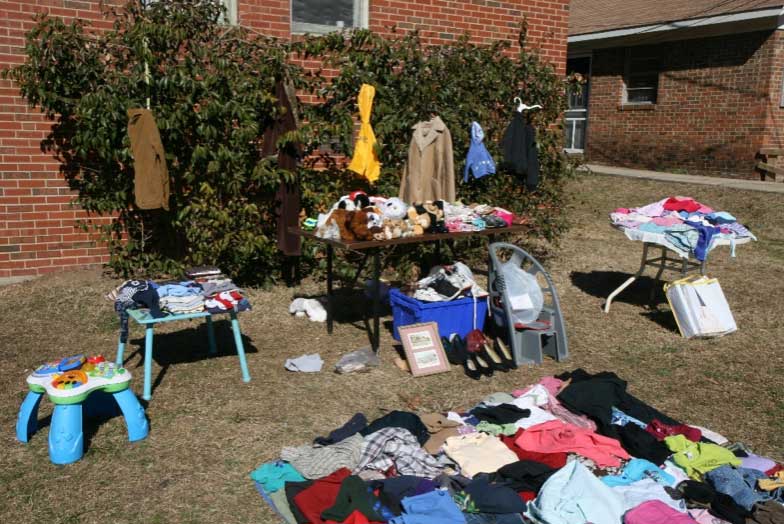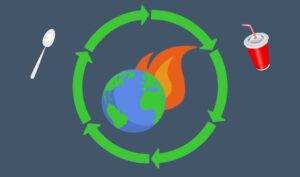In 1992, around 1,700 of the world’s leading scientists signed a document titled, “World Scientists’ Warning to Humanity,” which declared a climate emergency that, if ignored, would result in suffering and destruction on a worldwide scale. Three decades later, we are seemingly none the wiser, as global greenhouse gas emissions have risen by a staggering 40%.
One of the biggest contributors to this rise in greenhouse gas emissions is textile waste, which simply refers to textiles and fabric waste —particularly clothing—that is dumped in landfills or incinerated. Although there are many industries that produce high volumes of textile waste, the fashion industry is the biggest culprit. The sheer amount of clothes created every year is unsustainable, and the situation is only worsened by the societal norm of throwing away old clothes rather than giving them away or recycling them.
At Canadian Mattress Recycling Inc., we are determined to help Canada meet its recycling and sustainability goals. Besides deconstructing mattresses and furniture, we also keep textiles out of landfills by finding ways for the textiles we salvage to be re-used. Recently, we have started to give away furniture cushion covers and polyester filling from the furniture we process to teachers, who use them to create comfy floor seating for their students. We also donate covers to local animal shelters (unstuffed to be used as blanket-substitutes and stuffed ones as pet beds). As a part of our goal to help Canadians live a more environmentally sustainable lifestyle, we believe it is our duty to inform others on not just about how to reduce your textile waste, but why you should reduce your textile waste:
1. Limiting textile waste combats climate change
Clothing and footwear are responsible for 10% of global greenhouse gas emissions, and this is largely due to fast fashion. Fast fashion, the current norm of the fashion industry, is the process of producing high volumes of trendy and inexpensive clothes. Since these clothes are made with cheap materials, their lifespans are significantly reduced, resulting in a cycle of people regularly buying and throwing out clothes. The fashion industry’s emphasis on trendy clothing also leads to clothes being thrown out prematurely because, as we know, there is little worse in life than wearing corduroys that were fashionable in 2022 and have now (2023, as of the publication of this post) gone out of fashion.
According to a recent study, only 1% of clothes are recycled, however, this isn’t solely due to people not wanting to do so: many clothes are hard to recycle because they are not made with it in mind. Until recycling technology advances—or until more companies start making clothes that are recyclable—recycling alone will not dramatically reduce global textile waste.
In order to lower textile waste and thus help combat climate change, other avenues of limiting textile waste must receive attention in addition to recycling, such as donating and upcycling clothes. Upcycling is the process of transforming unwanted or defunct items to make them functional or more appealing. Giving away clothes rather than discarding them is a minor inconvenience at most, which brings us to our next point:
2. Reducing textile waste is easy
You may already know that textile waste is a major problem, and you may already know how to limit it. Despite knowing these things, you may do nothing to reduce your textile waste, and that isn’t anything to feel guilty about—everyone has a lot of progress to make if they want to lead eco-friendly lives (unless you’re one of those rare individuals who leads a zero waste lifestyle, in which case, good on you!). Perhaps one of the main reasons why you should reduce your textile waste is simply because it’s easy to. No, really.
Whether it’s giving away clothes that no longer fit you to younger relatives or holding a garage sale, there are so many easy ways to get rid of your unwanted clothes without contributing to the waste stream. You could always bag up and donate your clothes to places that would happily take them from you, such as Value Village, thrift stores, and shelters, or give them away for free online.

A yard sale with clothes, among other items, on display.
3. Being eco-friendly makes you happier
Another reason why you should reduce the amount of textile waste you produce is because numerous studies have found that there is a correlation between happiness and sustainable living. These studies have concluded that individuals who care about the environment and engage in eco-friendly behaviour tend to be happier than those who do not. One explanation for this conclusion is that many individuals find eco-friendly behaviour—even something as minor as turning off the lights after leaving a room—meaningful, and that being eco-friendly makes individuals feel good about themselves as a result.
You may be reluctant to lead an eco-friendlier life, and understandably so—making major changes to your lifestyle can be scary. It is important to note, however, that being eco-friendly doesn’t mean you have to start growing all your own vegetables and get rid of clothes only once they look as if caterpillars have mistaken them for leaves (although, if you do grow all your own vegetables and wear clothes riddled in holes, that’s perfectly fine). You can be eco-friendlier by starting with something easy and small, like recycling and donating things you no longer need.
The most important thing to take away from this point is that the irrefutable link between happiness and sustainability disproves the notion that being eco-friendly means sacrificing one’s happiness. So, if you’re still on the fence about, say, giving away your unwanted clothes rather than just tossing them in the bin, just do what will make you happier. Which is giving them away.
4. Your bank account will thank you
If you still aren’t convinced about limiting your textile waste, we should point out that it would save you a considerable amount of money in the long-term. While we have mentioned a few ways of getting rid of clothes that don’t involve sending them to a landfill, perhaps the best way to reduce your textile waste is by not accumulating large (i.e., unnecessary) quantities of textiles in the first place.
Look in your closet and be honest: how many of your clothes do you really wear? According to a UK survey, the average British adult has nearly $300 worth of clothes in their closet that they’ve never worn. This startling data goes to show that we have a consumption problem, and it likely won’t come as a surprise that fast fashion is at the root of this issue.
Simply put, avoiding fast fashion clothing will result in both a more environmentally and financially sustainable life. Instead of buying suspiciously cheap clothing that you know won’t last long, invest in slightly more expensive clothing that will last you years. It may seem contradictory to spend more money to save money, but you will certainly save more money by buying better-made clothes designed to last rather than cheaply-made clothes designed to make you buy more clothes shortly after.
5. You will create safer environments for people and animals
Some researchers believe that landfills may pose health risks to those who work at them, as well as people and animals that live near them; therefore, reducing your textile waste will create safer environments for families and help preserve ecosystems.
One study suggests that there is an increased chance of children developing congenital malformations (aka birth defects) if their families live near landfills. Pollution, odor, and water contamination are just a few other hazards caused by landfills that the study mentions. With all the potential health issues that come with living in proximity to landfills, it would hardly come as a surprise if you were against the idea of living near one, although for all you know, you could be living near one. About one in six citizens of the United States live within three miles of toxic waste sites, and as Canada has its fair share of waste sites as well, you could be living near one without even knowing it.
Landfills of course negatively impact all of us, as well as animals and the planet, but that doesn’t mean that nothing can be done to lessen their harmful effect. With textiles occupying a significant portion of landfills, limiting your textile waste would help to reduce landfill use and their impact, and this vole would certainly be thankful.
Textile waste is a colossal waste train chugging along, and with factors such as the fashion industry only adding fuel to the fire, it won’t be losing steam anytime soon. If you would like to make a meaningful difference, we would strongly encourage you to try to reduce the amount of textile waste you produce: even something as simple as donating your unwanted clothing would make all the difference.

A cute water vole.





